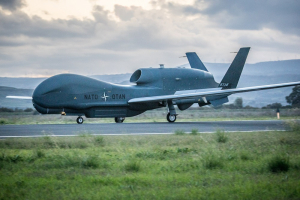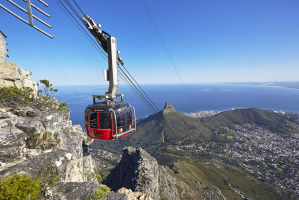Top 10 Most Expensive Military Weapons In The World
Military weapon development often requires a good deal of knowledge and experience. Therefore, it shouldn't be surprising to hear that military weapons ... read more...frequently cost a lot of money, especially when they are the best of the best. Already, the most cutting-edge military equipment can cost millions or even billions of dollars, which explains why only a tiny number of military units have access to it. It appears likely that their price tags will increase even more in the future. Here are 10 of the most expensive military weapons in the world.
-
The Lockheed Martin F-35 Lightning II is a single-seat, single-engine, all-weather stealth multirole combat aircraft designed for air superiority and strike operations. It can also conduct electronic warfare as well as intelligence, surveillance, and reconnaissance. Lockheed Martin is the primary F-35 contractor, alongside Northrop Grumman and BAE Systems as significant partners. The aircraft has three main variants: the conventional takeoff and landing F-35A, the short take-off and vertical-landing F-35B, and the carrier-based F-35C.
The aircraft is a direct descendant of the Lockheed Martin X-35, which won the Joint Strike Fighter program in 2001 over the Boeing X-32. The United States is primarily responsible for funding its development, with support from NATO program partner nations and close U.S. allies like the United Kingdom, Australia, Canada, Italy, Norway, Denmark, the Netherlands, and formerly Turkey. The aircraft are being ordered or considered by a number of different nations. The initiative has come under intense scrutiny and criticism due to its unparalleled scale, complexity, skyrocketing costs, and lengthy delivery delays. The parallel manufacture of the aircraft, while it was still being developed and tested as part of the acquisition plan, resulted in pricey design modifications and retrofits.
The F-35 made its maiden flight in 2006 and entered service with the U.S. Marine Corps F-35B in July 2015. The U.S. Air Force F-35A and U.S. Navy F-35C then followed in August 2016 and February 2019, respectively. The Israeli Air Force utilized the aircraft for the first time in battle in 2018. The U.S. intends to purchase 2,456 F-35s until 2044, which will make up the majority of the crewed tactical aviation for the U.S. Air Force, Navy, and Marine Corps for a number of decades; the aircraft is anticipated to be a pillar of NATO and U.S.-allied air power and operate until 2070. The F-35 is now expected to cost $1.7 trillion overall, which includes $1.3 trillion for operations and sustainment over a 66-year period.
Cost: $1.7 trillion overall
Country: United States
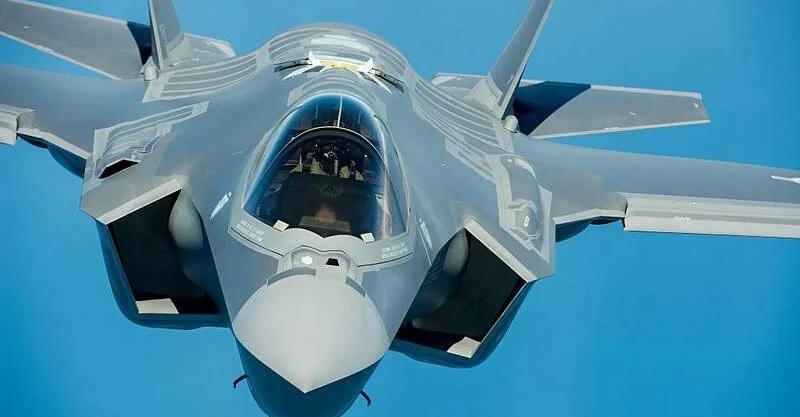
Source: airforce-technology 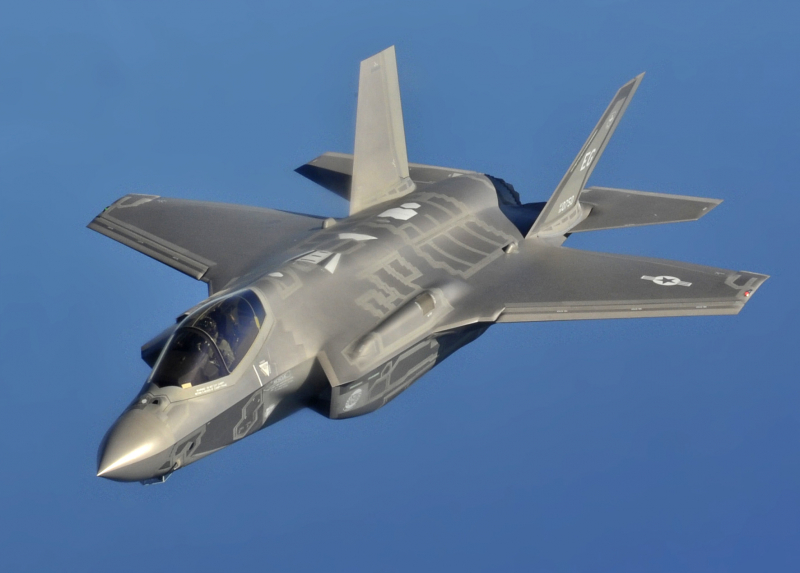
Source: wikipedia -
A single Arleigh Burke costs $1.843 billion, while all of the Arleigh Burkes in existence have cost about $101.8 billion. Arleigh Burke (DDG-51), named for Admiral Arleigh A. Burke, USN (1901–1996), is the lead ship of the Arleigh Burke-class guided-missile destroyers. She was laid down by the Bath Iron Works company at Bath, Maine, on 6 December 1988, launched on 16 September 1989, and commissioned on 4 July 1991.
The Commander, Operational Test and Evaluation Force, was involved in the early stages of testing even before Arleigh Burke was commissioned. At land-based testing facilities, new systems were tested by sailors from the fleet. The Fighting System Engineering Development Site in Moorestown, New Jersey, hosted the testing of the combat systems. At the Gas Turbine Ship Land-Based Engineering Site in Philadelphia, Pennsylvania, the propulsion plant underwent testing. The purchase decision to start limited manufacturing of the ship class was backed by these test findings. On September 16, 1989, Mrs. Roberta (Gorsuch) Burke launched the ship. On July 4, her commissioning ceremony took place on the waterfront in the heart of Norfolk, Virginia, with Admiral Burke in attendance.
Many of the lessons learned by the Royal Navy during the Falklands conflict and from the Ticonderoga-class guided-missile cruisers were incorporated into the design of Arleigh Burke. The cost of producing Ticonderoga-class cruisers was rising and upgrades were proving too challenging. In order to increase a ship's ability to avoid radar detection, the Arleigh Burke was the first contemporary destroyer to be built with characteristics that minimize its radar cross-section. It also employs a slightly modified version of the Aegis fighting system, which enables simultaneous missile fire, tracking, and evasion. Its superstructure is well protected by all-steel construction, and it can operate in polluted areas due to its Collective Protection System and its ability to withstand chemical, biological, and radioactive pollutants.
Cost per unit: $1.843 billion
Total cost: $101.8 billion
Country: United States
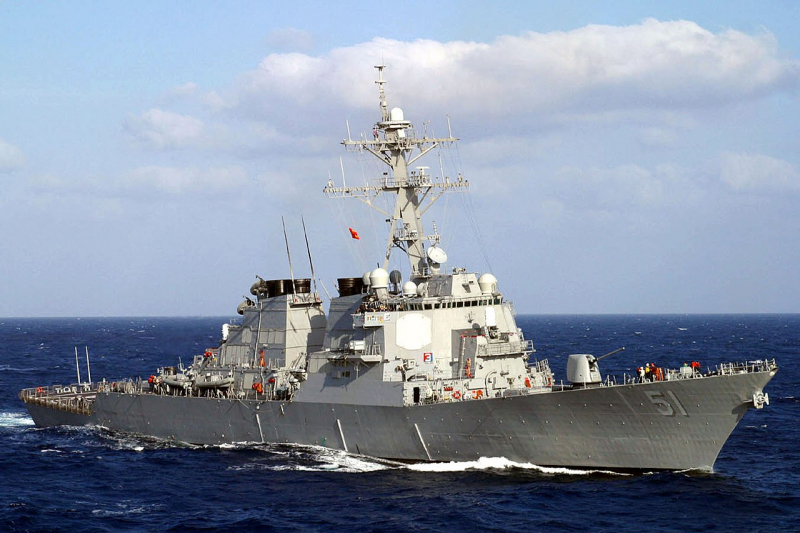
Source: wikipedia 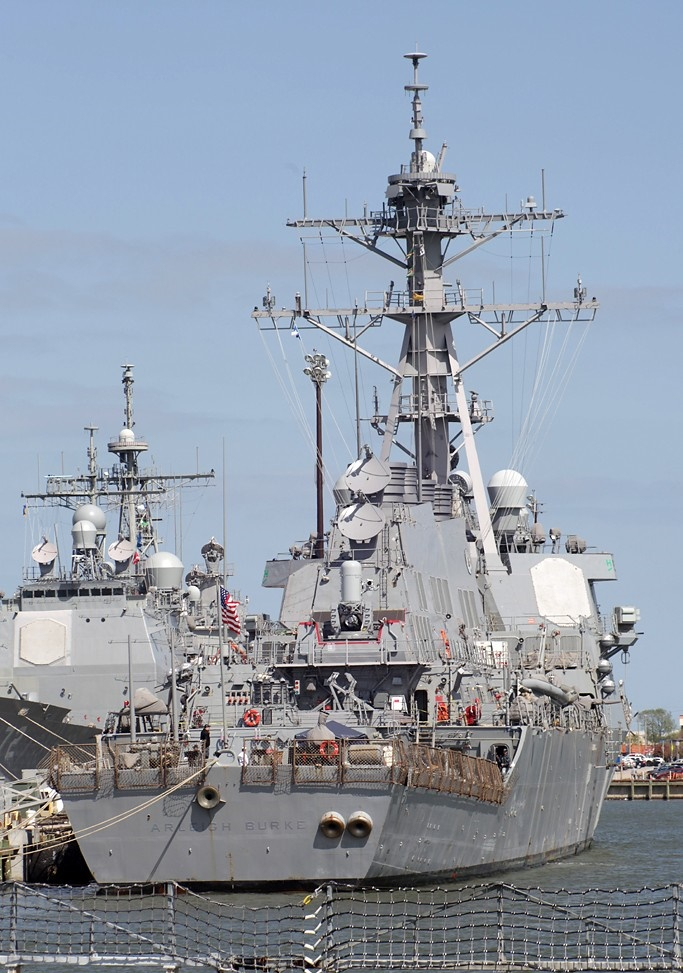
Source: navysite -
The Virginia class submarine often referred to as the SSN-774 class, is a subclass of nuclear-powered fast-attack cruise missile submarines used by the US Navy. The Virginia class submarine, the newest submarine model for the US Navy, was created by General Dynamics Electric Boat and Huntington Ingalls Industries and features the most recent in stealth, intelligence gathering, and weapons systems technology. Submarines of the Virginia class are built for a variety of open-ocean and littoral tasks, such as anti-submarine warfare and intelligence gathering. These older Los Angeles-class submarines, several of which have already been decommissioned, are intended to be replaced by them. Submarines of the Virginia-class will be purchased through 2043 and are anticipated to stay in service until at least 2060, with further submarines anticipating service well into the 2070s.
The Virginia-class submarine has four 533mm torpedo tubes and 12 vertical missile launch tubes. The vertical launching system has the ability to fire 16 Tomahawk cruise missiles from submarines at once. The 21-inch torpedo tubes can launch up to 26 mk48 ADCAP mod 6 heavyweight torpedoes and sub harpoon anti-ship missiles. Additionally, Mk60 CAPTOR mines can be installed. The hull includes an inbuilt lock-out/lock-in chamber for specific operations. The chamber can house a mini-submarine like Oceanic and Naval Systems' advanced SEAL delivery system from Northrop Grumman to transport special warfare forces like navy sea air land teams or marine reconnaissance units for operations against terrorism or small-scale hostilities.
The Virginia-class submarine cost $83.7 billion, despite being the Seawolf-class submarine's less expensive rival. It is an attack submarine with nuclear propulsion that can operate in both littoral and open ocean regions. As a result, it is equipped with a variety of armaments, like mines, torpedoes, and even Tomahawk missiles.
Cost: $83.7 billion
Country: United States
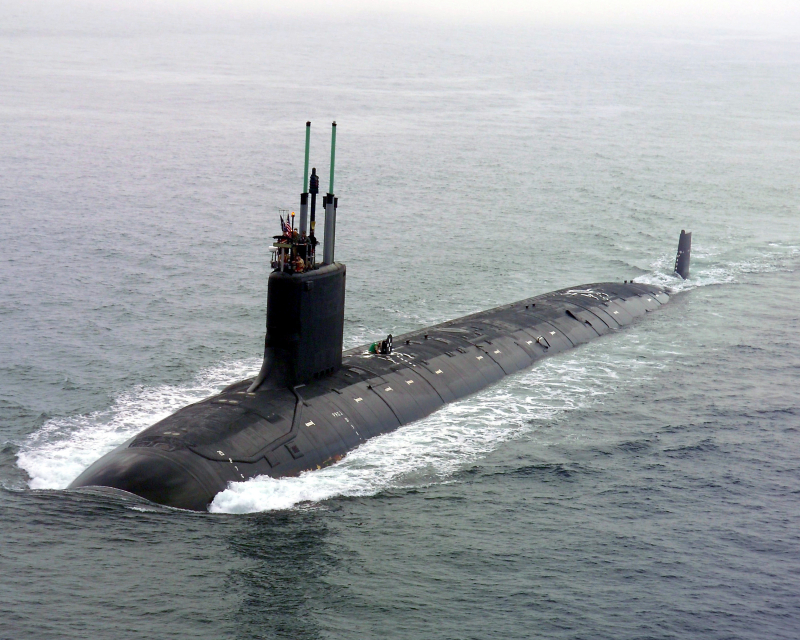
Source: wikipedia 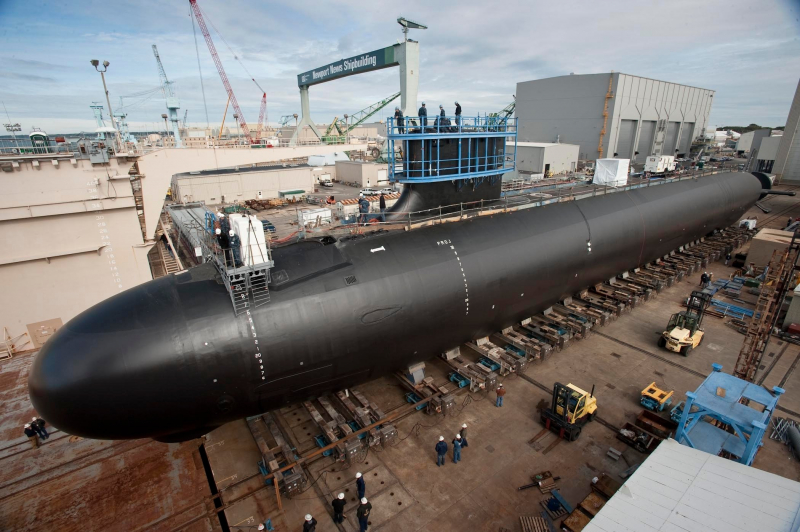
Source: news.usni -
American single-seat, twin-engine, all-weather stealth tactical fighter aircraft built for the United States Air Force (USAF) is the Lockheed Martin F-22 Raptor. The aircraft was developed as an air superiority fighter but also includes ground assault, electronic warfare, and signals intelligence capabilities as a result of the USAF's Advanced Tactical Fighter (ATF) program. Boeing supplied the F-22's wings, aft fuselage, avionics integration, and training systems, while Lockheed Martin, the prime contractor, constructed the majority of the aircraft's airframe and weapon systems and oversaw final assembly.
The plane made its first flight in 1997, and before officially entering service as the F-22A in December 2005, it had multiple designations including F-22 and F/A-22. The USAF views the F-22 as an essential part of its tactical airpower despite its lengthy development and operating challenges. Unprecedented air warfare capabilities are made possible by the fighter's combination of stealth, aerodynamic performance, and mission systems. The USAF had once intended to purchase 750 ATFs altogether. Due to high costs, a lack of air-to-air missions as a result of the program's emphasis on counterinsurgency operations at the time of production, a ban on exports, and the development of the more cost-effective and versatile F-35, the program's goal of 187 operational aircraft was reduced in 2009; the final F-22 was delivered in 2012.
The F-22 Raptor cost $79.2 billion in total, which is reasonable given that it is a cutting-edge stealth fighter. It should therefore come as no surprise to hear that it is equipped with two short-range and six medium-range air-to-air missiles, with the intention of destroying its opponents in the air before they are even aware of its presence. However, it is interesting to note that it carries bombs as well so that it can perform in other missions as well.
Cost: $79.2 billion
Country: United States
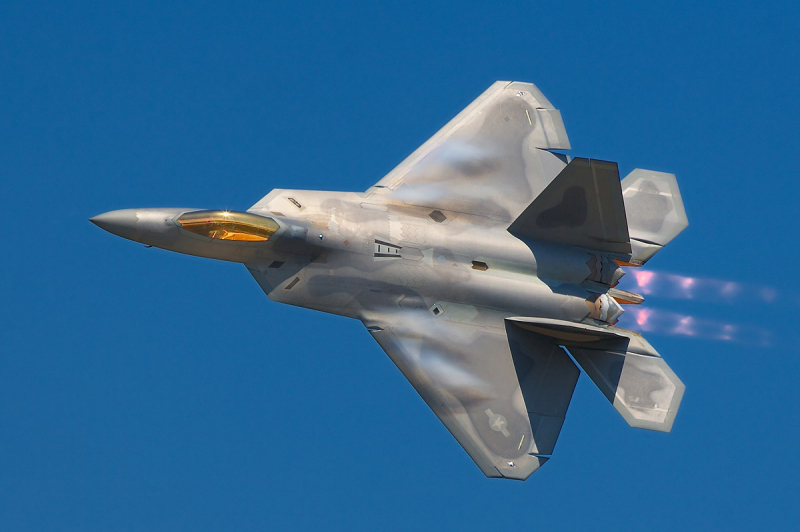
Source: wikipedia 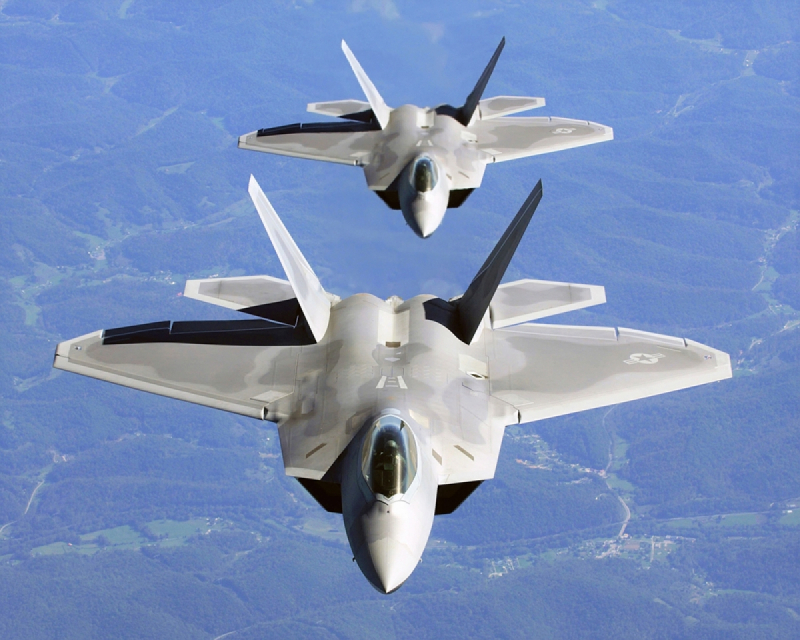
Source: vov.gov.vn -
The F/A-I8 E/F SUPER HORNET, which becomes one of the most expensive military weapons in the world, is an improvement to the hornet that is intended for long-term usage. In fact, it is believed that it will remain in use much after its successors, the F-35, do. The navy is using the majority of the models, hence they are situated on aircraft carriers. Each super hornet carries a full complement of air-to-air missiles, air-to-ground missiles, and laser-guided bombs in addition to a 20-millimeter gun for emergency usage.
Based on the McDonnell Douglas F/A-18 Hornet, the Boeing F/A-18 E/F Super Hornet are twin-engine, carrier-capable, multirole fighter aircraft. The larger and more modern F/A-18C and D Hornet derivatives are the single-seat F/A-18E and tandem-seat F/A-18F. The Super Hornet can transport air-to-air missiles and air-to-surface armaments and features an internal 20 mm M61 rotating gun. Up to five external fuel tanks can carry extra gasoline, and an external air-to-air refueling system can convert the aircraft into an airborne tanker.
The Super Hornet was created by McDonnell Douglas and launched into flight in 1995. After the merger of McDonnell Douglas and Boeing, low-rate production started in early 1997, while full-rate production resumed in September 1997. In 1999, the Grumman F-14 Tomcat was replaced by the Super Hornet, which has served alongside the original Hornet since the Grumman F-14 Tomcat was retired in 2006. The Royal Australian Air Force (RAAF), which has been using the General Dynamics F-111C as its primary fighter since 1984, ordered the F/A-18F in 2007. In December 2010, RAAF Super Hornets went into service.
Cost: $65 million
Country: United States
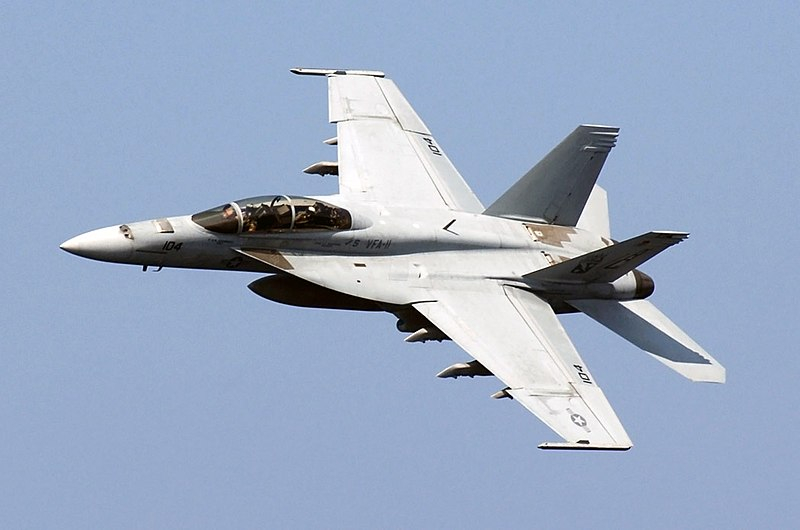
Source: wikipedia 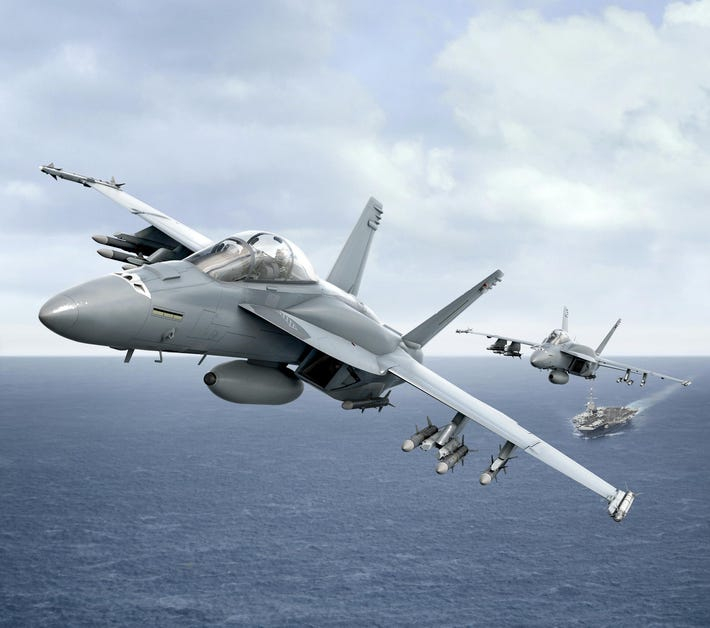
Source: forbes -
The Bell Boeing V-22 Osprey is an American tiltrotor military aircraft having the ability to do both short takeoff and landings (STOL) and vertical takeoff and landings (VTOL). The practicality of a traditional helicopter and the high-speed, long-range cruising capability of a turboprop aircraft are combined in its design. The failure of Operation Eagle Claw in 1980 (during the Iran hostage crisis) highlighted the fact that neither conventional helicopters nor fixed-wing transport planes were suitable for all military missions. The Joint-service Vertical take-off/landing Experimental (JVX) program was launched by the US Department of Defense (DoD) in order to create a novel transport aircraft with long-range, high-speed, and vertical-takeoff capabilities. A contract for the V-22 tiltrotor aircraft's development was given to a partnership between Bell Helicopter and Boeing Helicopters in 1983. The airplane is collaboratively made by the Bell Boeing team. The V-22 began flight testing and design modifications after its initial flight in 1989, but it took many years to create due to its complexity and challenges as the world's first tiltrotor for military use.
The Boeing Vertol CH-46 Sea Knights of the United States Marine Corps (USMC) were supplemented by the MV-22B Osprey before being replaced by it in 2007. Crew training for the MV-22B Osprey began in 2000. In 2009, the U.S. Air Force (USAF) put into service the CV-22B, a tiltrotor. The Osprey has been used in transportation and medevac operations over Iraq, Afghanistan, Libya, and Kuwait since it began serving with the Marine Corps and Air Force. Beginning in 2021, the U.S. Navy intended to employ the CMV-22B for carrier onboard delivery missions.
The V-22 Osprey should be easily identifiable because of its distinctive profile, which is a result of the fact that it is able to perform vertical and short takeoffs and landings. Because it is intended to be a long-range transport with the finest qualities of both helicopters and fixed-wing aircraft, these attributes when combined allow it to operate in a variety of conditions. The V-22 Osprey now costs $57.8 billion.
Cost: $57.8 billion
Country: United States
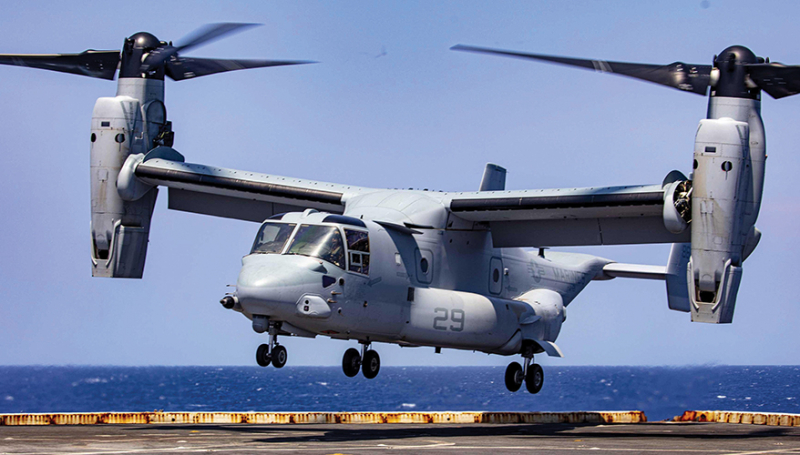
Source: nationaldefensemagazine 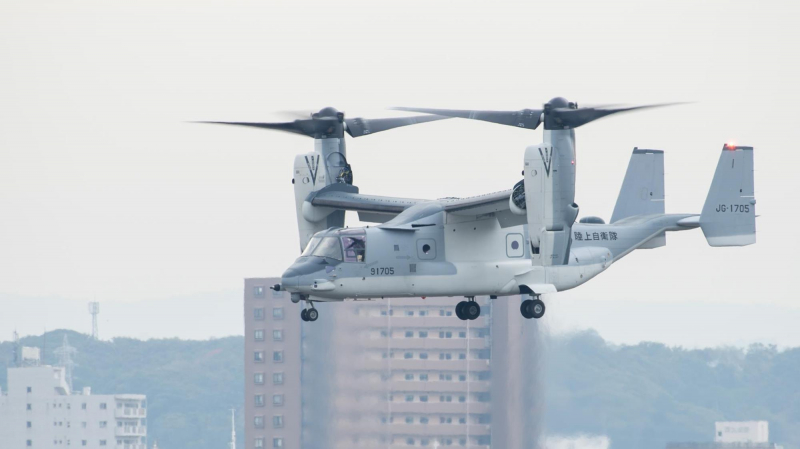
Source: flightglobal -
A submarine-launched ballistic missile (SLBM), also known as the UGM-133A Trident II, was developed by Lockheed Martin Space in Sunnyvale, California, and is used by the navy of the United States and the United Kingdom. It has been in use ever since its initial deployment in March 1990. Compared to the older Trident C-4, the Trident II Strategic Weapons System is a better SLBM with increased accuracy, payload, and range. It improves U.S. strategic deterrence and is a crucial component of the strategic nuclear triad of the United States. The Trident II is regarded as a tough sea-based system that can engage a variety of targets. With performance and payload flexibility that can support active treaty initiatives, it strengthens the U.S. position in strategic weapons negotiations (see New START). Nuclear deterrence can be carried out with fewer submarines because of the Trident II's enhanced payload, and its superb accuracy which is on par with that of land-based missiles, allows it to be deployed as a first strike weapon.
Four British Vanguard-class submarines and fourteen US Ohio class submarines each carry fourteen Trident II missiles, each with sixteen missiles (the number of missiles on Ohio-class submarines will be reduced to 20 each starting in 2023, in compliance with the New Strategic Arms Reduction Treaty). Since the D5 missile's design was finished in 1989, there have been 177 successful test launches, the most recent of which took place in February 2020 from the USS Maine (SSBN-741). Less than ten test flights have failed, with the most recent one occurring in June 2016 with HMS Vengeance off the coast of Florida. The D5 is the sixth generation of sea-based missiles to be used since the program's inception 60 years ago. Till 2042, the Trident D5LE (life-extension) variant will be in use.
It can travel up to 13,000 miles per hour and is categorized as an SLBM, which is a ballistic missile that is launched at its intended target from a submarine. Given that it is equipped with nuclear weapons, it has never been used, and, provided everything goes according to plan, it will never be deployed. A conventional variant was once suggested, but it was never implemented because the majority of sensors had significant difficulty telling a nuclear ballistic missile from a regular ballistic missile. Combined, the two navies have spent $53.2 billion on the missile system so far.
Cost: $53.2 billion
Country: United States
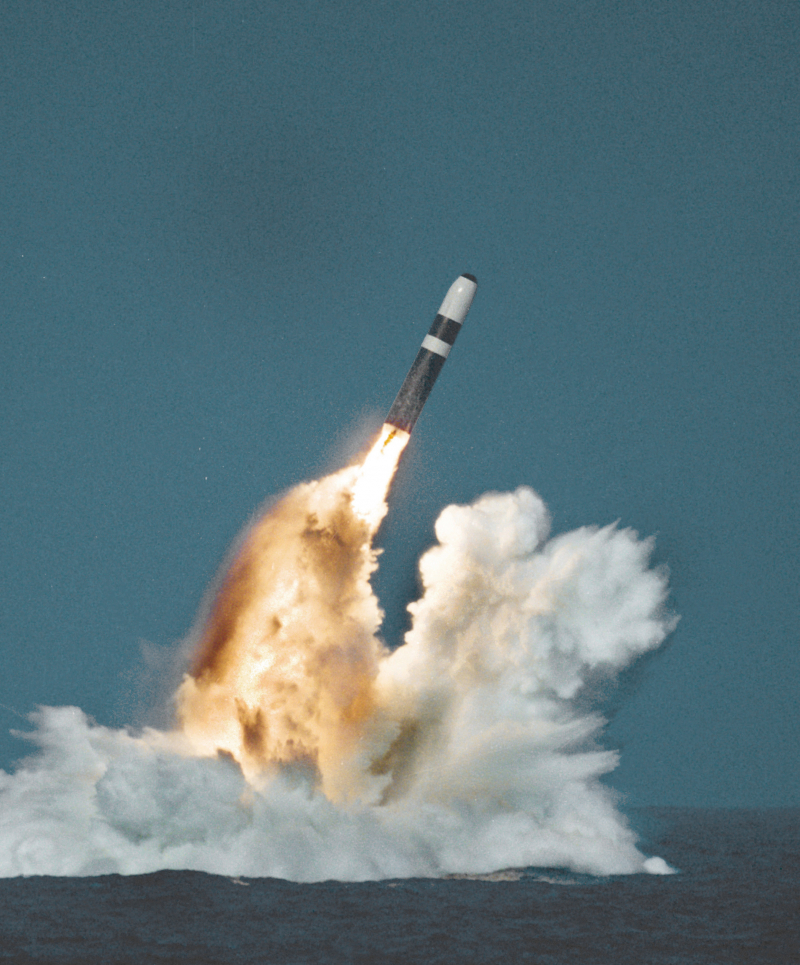
Source: wikipedia 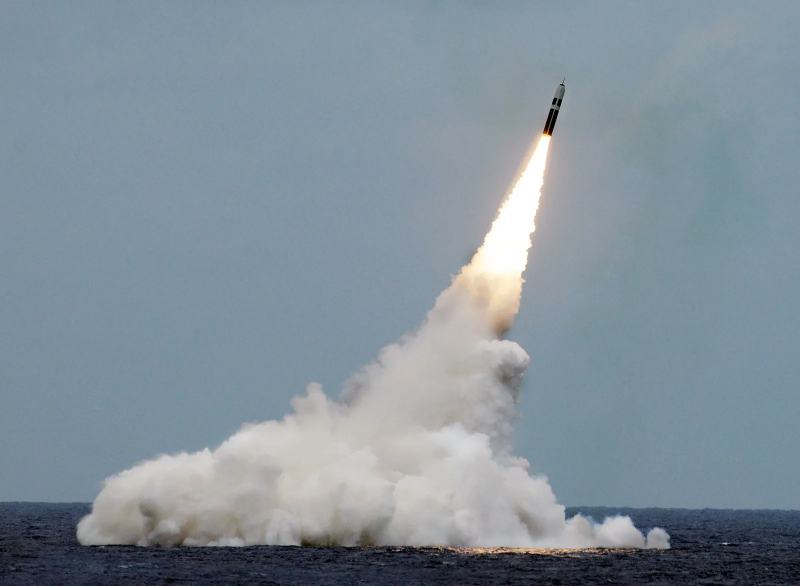
Source: britannica -
The Mine Resistant Ambush Protected (MRAP) family of vehicles offers Soldiers highly resilient multimission platforms that can counter threats from small arms fire, underbody mines, rocket-propelled grenades, explosively formed penetrators, and improvised explosive devices (IEDs), which are responsible for the majority of casualties in overseas contingency operations. The Mine Resistant Ambush Protected All-Terrain Vehicle (M-ATV) and the MaxxPro Family of Vehicles are the two main vehicle platforms that make up the Army MRAP enduring fleet. The Armored Personnel Carrier, Weapons Carrier, Convoy Protection Platform, Key Leader Vehicle, Command Post, and Armored Ambulance missions are all carried out by this adaptable family of vehicles.
The Rhodesian Army first adopted light armored vehicles made expressly to withstand land mines in the 1970s. South African manufacturers continued to build these vehicles, beginning in 1974 with the Hippo armored personnel carrier (APC). The Bosvark, a Unimog equipped with a shallow mine-deflecting tub on the chassis to protect the crew, was the SADF's initial step. The Hippo and other light kinds were among the first wave of purpose-built vehicles to appear. In essence, they were truck-mounted V-shaped armored hulls. The Buffel, a Unimog chassis with a mine-protected cab and crew compartment placed on it, served as a representative of the following generation. These early cars served their purpose, but the heavier chassis made them less maneuverable off-road. After 1980, the South African Defence Force created the Casspir infantry mobility vehicle, which served as the model for several of the MRAP program's vehicles and served as inspiration for the American effort.
With the aid of asymmetrical strategies, MRAP equips light forces with protected mobility and mounted weapons to conduct wide-area security. When the role shifts from decisive operations to stability, they give Brigade Combat Teams a quick motorization capability or handle rear-area security during decisive operations. The Joint Mine Resistant Ambush Protected Vehicle, which cost $41.6 billion, has so far played a significant role in the U.S. military. Because it is not only bulletproof, as its name implies, but also protected against the explosion of roadside bombs, it was a crucial instrument in both Afghanistan and Iraq. Having said that, it is intriguing to observe that there are many different kinds of these vehicles for a variety of missions, even though they all have a V-shaped design that is well-suited for withstanding explosives.
Cost: $41.6 billion
Country: United States
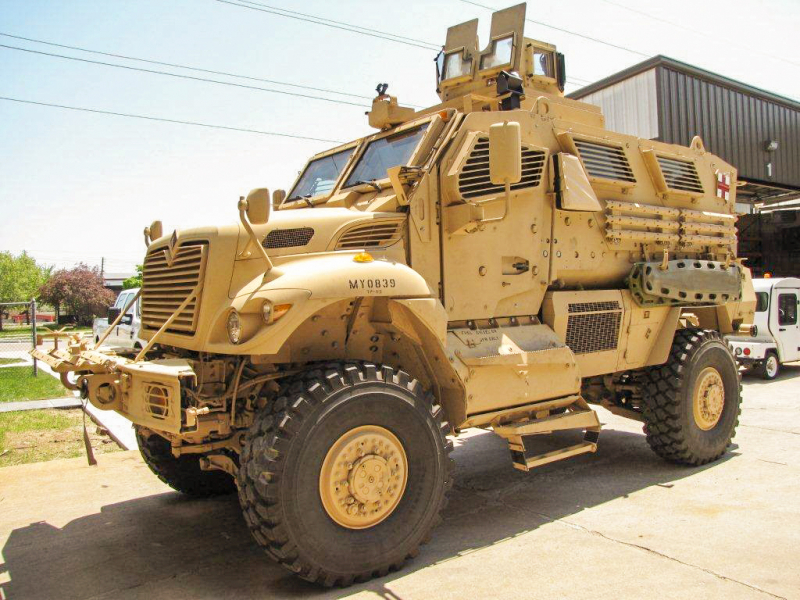
Source: asc.army.mil 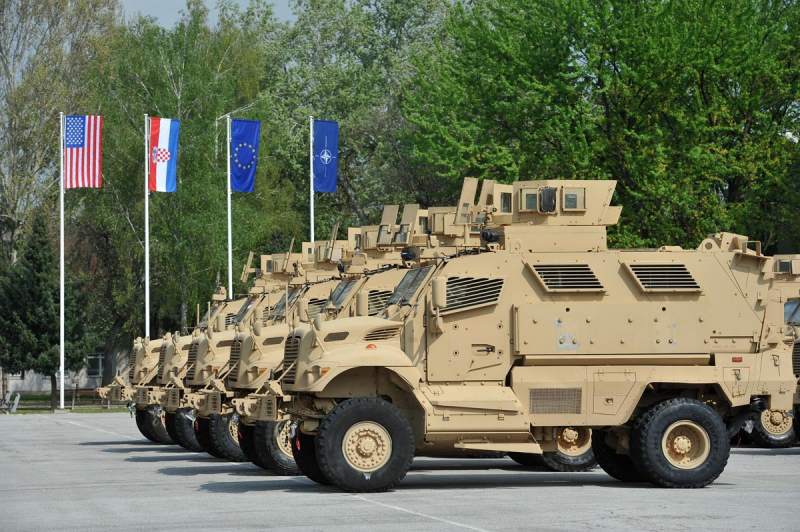
Source: morh.hr -
The lead ship in her class of American Navy aircraft carriers is USS Gerald R. Ford (CVN-78). The vessel bears the name Gerald Ford in honor of the 38th President of the United States, who served in the military during World War II and saw battle when stationed on the light aircraft carrier Monterey in the Pacific Theater.
On August 11, 2005, Northrop Grumman held a ceremonial steel cut for a 15-ton plate that is a component of the carrier's side shell unit. This marked the start of construction. On November 13, 2009, Gerald R. Ford's keel was formally laid. On November 9, 2013, she was baptized. Gerald R. Ford replaced the USS Enterprise (CVN-65), which was decommissioned in December 2012 after 51 years of service. Gerald R. Ford was originally due to be delivered in 2015; however, she was delivered to the Navy on May 31, 2017, and President Donald Trump formally commissioned her on July 22, 2017. The carrier will make its first deployment, according to the Navy, sometime in 2022. It is the largest aircraft carrier in the world as of 2017 and the largest warship ever built in terms of displacement.
The USS Enterprise and the US Navy's current Nimitz-class carriers could be replaced by the GERALD FORD class of aircraft carriers, which is currently being developed. In addition to having technology like the electromagnetic aircraft launch system and other design elements targeted at increasing efficiency and reducing operational costs, such as sailing with a smaller staff, the new ships have a hull similar to the Nimitz-class carriers. Gerald R. Ford aircraft carrier can hold 75 aircraft and is more than 100,000 tons in weight.
Cost: $13.3 billion
Country: United States
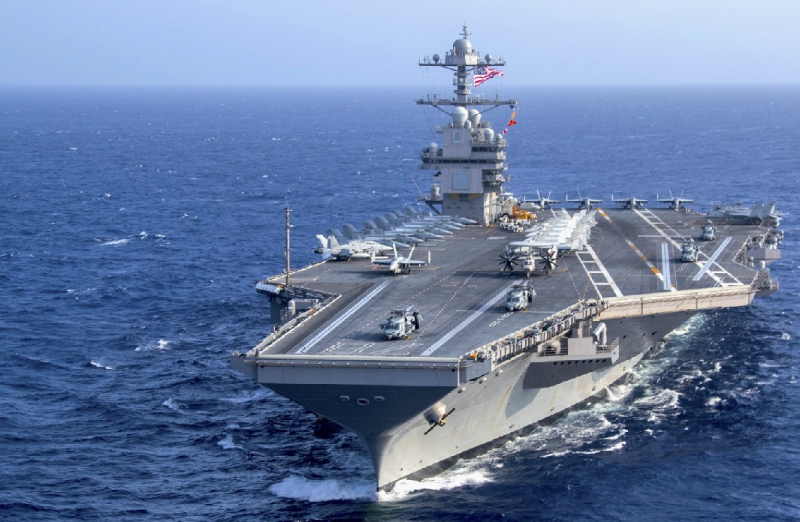
Source: navalpost 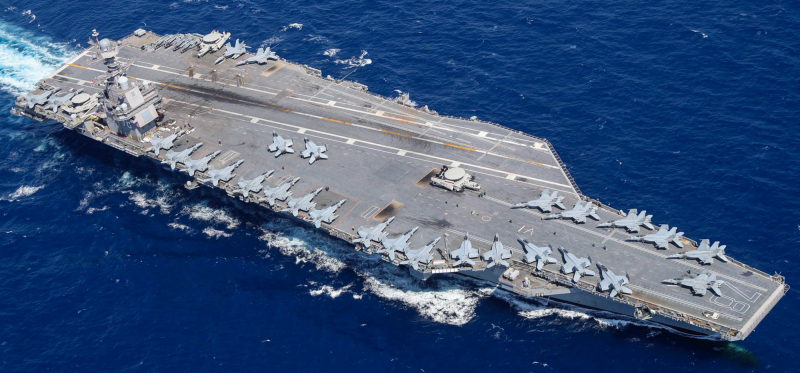
Source: seaforces -
Boeing Defense, Space & Security developed and manufactured the Boeing P-8 Poseidon, an American maritime patrol and reconnaissance aircraft modified from the 737-800ERX. It ranks last on this list of the most expensive military weapons in the world. It was created for the American Navy (USN). The anti-surface warfare (ASUW), anti-submarine warfare (ASW), and intelligence, surveillance, and reconnaissance (ISR) tasks are all performed by the P-8. It can monitor and drop sonobuoys, carry torpedoes, Harpoon anti-ship missiles, and other weapons. It can also work with other equipment, such as the Northrop Grumman MQ-4C Triton maritime surveillance unmanned aerial vehicle (UAV). The Royal Australian Air Force, the Indian Navy, the United States Navy and the Royal Air Force of the United Kingdom all fly the P-8. Additionally, the German Navy, the Republic of Korea Navy, the Royal Norwegian Air Force, and the Royal New Zealand Air Force have also placed orders for it.
The P-8 is a 737-800ERX with 737-900-based wings that have been weaponized. The USN's C-40 Clipper transport plane, which is based on the 737-700, has a fuselage that is comparable to but longer than that one. In place of the blended winglets found on 737NG variants, the P-8 incorporates raked wingtips similar to those supplied to the Boeing 767-400ER and a strengthened fuselage for low-altitude operations. The P-8's 180 kVA electric generators on each engine, which replace the 90 kVA generators on civilian 737s, are used to power additional onboard electronics; this required reworking the nacelles and their wing mountings. Compared to the P-3 that came before it, the P-8 boasts a smoother flight experience, exposing personnel to less turbulence and fumes, allowing them to focus more intently on missions.
Cost: $1.6 billion
Country: United States
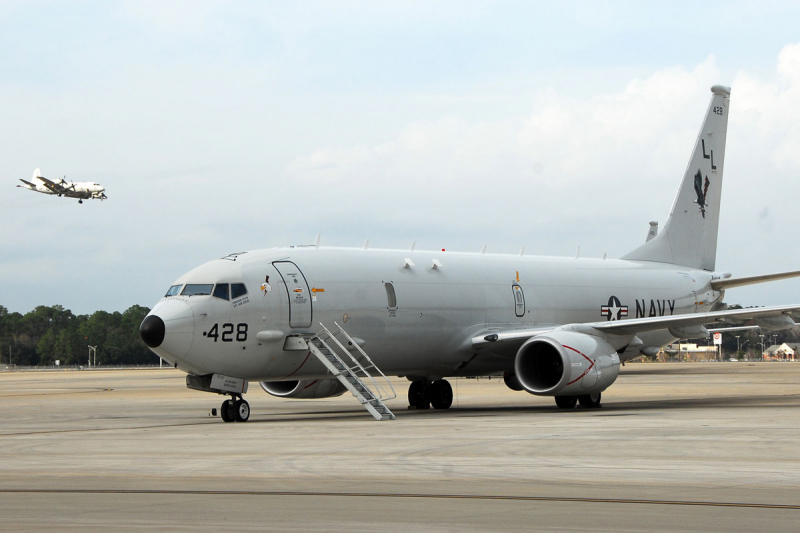
Source: airdatanews 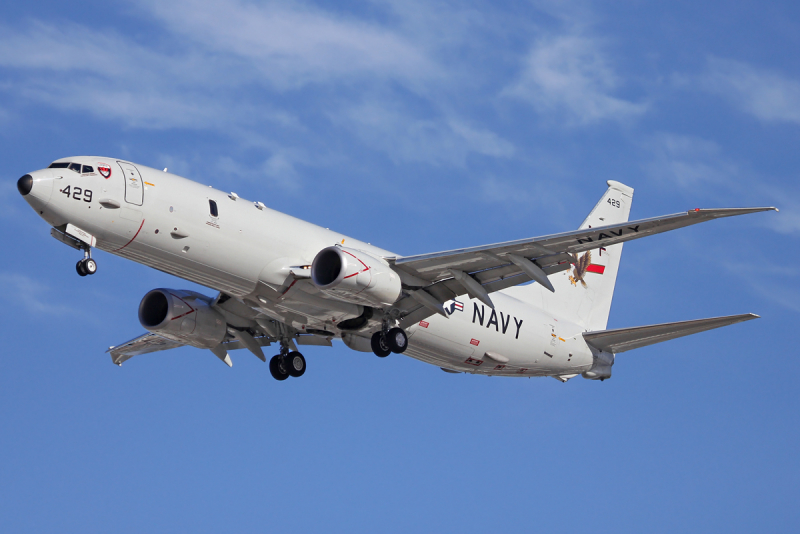
Source: wikipedia












